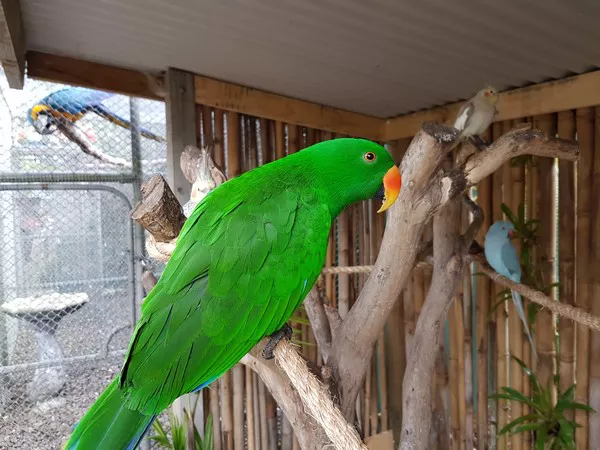The world of dog breeds is diverse and fascinating, with various breeds that capture our hearts with their unique characteristics. However, confusion sometimes arises when it comes to distinguishing between certain breeds, such as the American Bulldog and the Pitbull. While there are some similarities between them, it is crucial to understand their distinctions to avoid misconceptions. In this article, we will explore the key differences between the American Bulldog and the Pitbull to shed light on this often misunderstood topic.
I. Origins and History:
The origins and history of the American Bulldog and the Pitbull are intriguing and play a significant role in understanding their development as distinct breeds.
American Bulldog:
The American Bulldog traces its ancestry back to the ancient English Bulldogs. English Bulldogs were originally bred in England for various purposes, including bull-baiting, a cruel blood sport that involved dogs attacking and subduing bulls. However, as these blood sports were banned in the 19th century, the breed’s purpose shifted to farm work and general utility.
Immigrants from England brought their Bulldogs to America, where they continued to be used as working dogs. The breed gradually evolved, adapting to the demands of American agricultural life. These dogs were employed for herding livestock, guarding property, and serving as all-around farm dogs. They were valued for their strength, athleticism, and loyalty.
During the 20th century, John D. Johnson and Alan Scott played influential roles in preserving and revitalizing the American Bulldog breed. They worked on refining the breed’s characteristics while maintaining its working abilities. Their efforts led to the recognition and preservation of the American Bulldog as a distinct breed.
Pitbull:
The term “Pitbull” is often used to refer to the American Pit Bull Terrier (APBT). The breed has a complex and controversial history tied to blood sports like bull-baiting, bear-baiting, and later dogfighting. The ancestors of the APBT were brought to America by English and Irish immigrants in the 19th century.
In the early years, Pitbull-type dogs were used in blood sports, where they showcased their strength, tenacity, and gameness. However, these activities were eventually outlawed, leading to a shift in the breed’s purpose. Pitbulls found new roles as working dogs, assisting farmers, and performing tasks like hunting, guarding, and even serving as family companions.
Over time, the breed’s reputation became marred by sensationalized media coverage and misuse by irresponsible owners. It is important to note that the APBT itself is not inherently aggressive or dangerous. Like any breed, their temperament and behavior are influenced by their genetics, upbringing, and socialization.
In recent years, dedicated Pitbull enthusiasts have been working to promote responsible ownership and dispel the negative stereotypes associated with the breed. They emphasize the loving, loyal, and intelligent nature of well-bred and properly raised Pitbulls.
II. Physical Appearance:
When it comes to physical appearance, the American Bulldog and the Pitbull share some similarities but also have distinct features that set them apart. Understanding their physical characteristics is essential in differentiating between the two breeds.
American Bulldog:
The American Bulldog is a powerful and muscular breed with a sturdy build. They have a broad chest and a thick, strong neck. Their head is large and square-shaped, often characterized by a pronounced jawline. The muzzle is broad and short, giving them a distinctive and determined facial expression. American Bulldogs have well-developed cheeks and a distinct stop, which is the indentation between the forehead and the muzzle. Their eyes are typically dark and round, and their ears can be either cropped or left natural, depending on personal preference.
In terms of size, American Bulldogs are generally larger than Pitbulls. Males typically stand between 22 to 27 inches (56 to 69 cm) at the shoulder and weigh between 75 to 125 pounds (34 to 57 kg). Females are slightly smaller, ranging from 20 to 25 inches (51 to 64 cm) in height and weighing between 60 to 105 pounds (27 to 48 kg).
Pitbull:
The Pitbull, specifically the American Pit Bull Terrier (APBT), has a leaner and more athletic physique compared to the American Bulldog. They possess a medium-sized frame with well-defined musculature. Pitbulls have a moderately broad chest and a strong, muscular neck that blends smoothly into their body. Their head is medium-sized and features a distinct square-shaped jawline. The muzzle is relatively short and tapers gradually towards the nose. Pitbulls have medium-sized, round eyes that are set wide apart. Their ears can be either natural or cropped, although ear cropping is less common in this breed.
In terms of size, Pitbulls are generally smaller than American Bulldogs. Males typically stand between 18 to 21 inches (46 to 53 cm) at the shoulder and weigh between 35 to 60 pounds (16 to 27 kg). Females are slightly smaller, ranging from 17 to 20 inches (43 to 51 cm) in height and weighing between 30 to 50 pounds (14 to 23 kg).
While both breeds have strong and muscular bodies, the American Bulldog tends to have a bulkier and more substantial build compared to the leaner physique of the Pitbull.
III. Temperament and Personality:
Temperament and personality are crucial aspects to consider when comparing the American Bulldog and the Pitbull. While both breeds can display affection and loyalty towards their owners, there are distinctive characteristics that set them apart in terms of their behavior and temperament.
American Bulldog:
American Bulldogs are known for their protective and loyal nature. They are often described as confident, brave, and assertive. These dogs tend to form strong bonds with their families and are generally good with children. They can be quite affectionate and enjoy spending time with their loved ones. American Bulldogs are also known for their intelligence, which makes them responsive to training and eager to please their owners.
However, it is important to note that American Bulldogs may exhibit aggression or protective behavior towards strangers or other animals if not properly socialized and trained. Early socialization, positive reinforcement training, and responsible ownership are crucial in shaping their behavior and ensuring they develop into well-rounded and balanced dogs.
Pitbull:
Pitbulls, specifically American Pit Bull Terriers, are often misunderstood and have been subject to negative stereotypes. However, responsible Pitbull owners emphasize that the breed can be affectionate, friendly, and even gentle. Well-bred and properly raised Pitbulls are known for their loyalty, intelligence, and eagerness to please their owners.
Pitbulls are generally social dogs and can get along well with people and other animals when properly socialized from a young age. They have a reputation for being excellent family dogs, particularly with children. Pitbulls thrive on human companionship and are often described as being highly trainable.
It is important to remember that individual temperament can vary within a breed, and factors such as genetics, upbringing, and socialization play significant roles in shaping a dog‘s behavior. Responsible ownership, early socialization, and positive reinforcement training are essential for raising a well-behaved and balanced Pitbull.
IV. Training and Exercise Needs:
Training and exercise are essential aspects of owning any dog breed, including the American Bulldog and the Pitbull. Both breeds require physical activity and mental stimulation to stay happy, healthy, and well-behaved. However, there are slight differences in their training and exercise needs.
American Bulldog:
American Bulldogs are active and energetic dogs, but their exercise requirements are generally moderate compared to some other breeds. Regular exercise is important to prevent boredom and to help them maintain a healthy weight. They benefit from activities that engage both their body and mind.
Daily walks, brisk jogging, or running alongside a bicycle are good ways to provide them with physical exercise. Engaging in interactive play sessions, such as fetch or tug-of-war, can also help burn off excess energy. American Bulldogs have a natural instinct for working and enjoy tasks such as obedience training, agility, and even cart pulling.
In terms of training, American Bulldogs are intelligent and respond well to positive reinforcement methods. They are eager to please their owners, making them relatively easy to train. Consistency, patience, and firm yet gentle guidance are key to their training success. Early socialization is crucial to ensure they develop proper manners and good behavior around people and other animals.
Pitbull:
Pitbulls have higher energy levels and require more exercise compared to American Bulldogs. They are athletic and agile dogs that thrive on physical activity and mental stimulation. Daily exercise is important to keep them physically and mentally stimulated, preventing boredom and potential behavior problems.
Pitbulls benefit from a variety of exercise options. This includes daily walks, jogs, or runs, along with more vigorous activities such as agility training, interactive games like fetch or Frisbee, and even swimming. It is essential to provide them with ample opportunities to burn off energy and engage in activities that challenge their physical abilities.
Training Pitbulls requires consistency, positive reinforcement, and early socialization. They are intelligent and eager to learn, making them responsive to training. Obedience training and mental stimulation are crucial to their overall well-being. It is important to establish clear rules and boundaries and to socialize them with other animals and people from an early age.
V. Breed-Specific Legislation:
Breed-Specific Legislation (BSL) refers to laws and regulations that target specific dog breeds based on their perceived characteristics or breed type. Unfortunately, both the American Bulldog and the Pitbull have been affected by such legislation in certain regions. It is important to address the issue of BSL when discussing these breeds.
American Bulldog:
While American Bulldogs may resemble Pitbulls in appearance, they are generally not included in breed-specific legislation. The American Bulldog is not as widely regulated or targeted by BSL compared to Pitbull-type breeds. However, it is crucial to research and understand local regulations and restrictions regarding dog ownership, as they can vary from one jurisdiction to another.
Pitbull:
Pitbulls, specifically the American Pit Bull Terrier, have been subjected to breed-specific legislation in various parts of the world. These laws often impose restrictions, such as breed bans, mandatory muzzling, and stringent ownership requirements. However, it is important to note that the term “Pitbull” can encompass different breeds or mixes that share certain physical characteristics rather than a specific breed itself. BSL has been a subject of debate and criticism, as it is widely recognized that a dog’s behavior and temperament should be assessed on an individual basis rather than solely based on breed.
It is worth emphasizing that responsible ownership and proper training play a significant role in shaping a dog’s behavior, regardless of breed. Focusing on owner education, promoting responsible breeding practices, and encouraging positive interactions between dogs and their communities can be more effective approaches in ensuring public safety.
Conclusion:
While the American Bulldog and the Pitbull may share certain physical characteristics and a common ancestry, they are distinct breeds with unique histories, temperaments, and exercise requirements. Recognizing and understanding these differences can help dispel misconceptions and promote responsible dog ownership. Whether you are considering adding an American Bulldog or a Pitbull to your family or simply want to appreciate these remarkable breeds, remember that every dog is an individual and deserves love, care, and proper training, regardless of their breed.
Recommended reading:

























